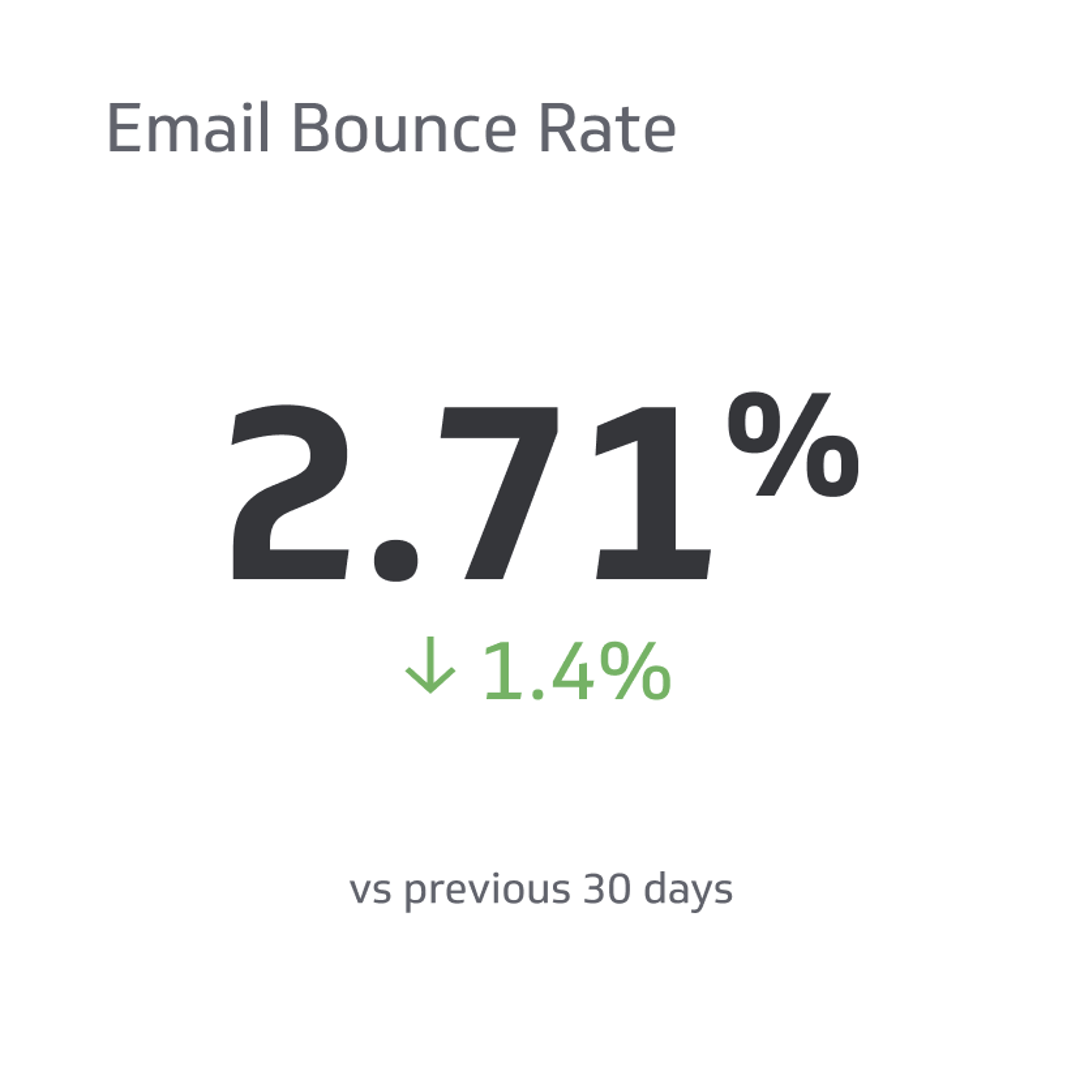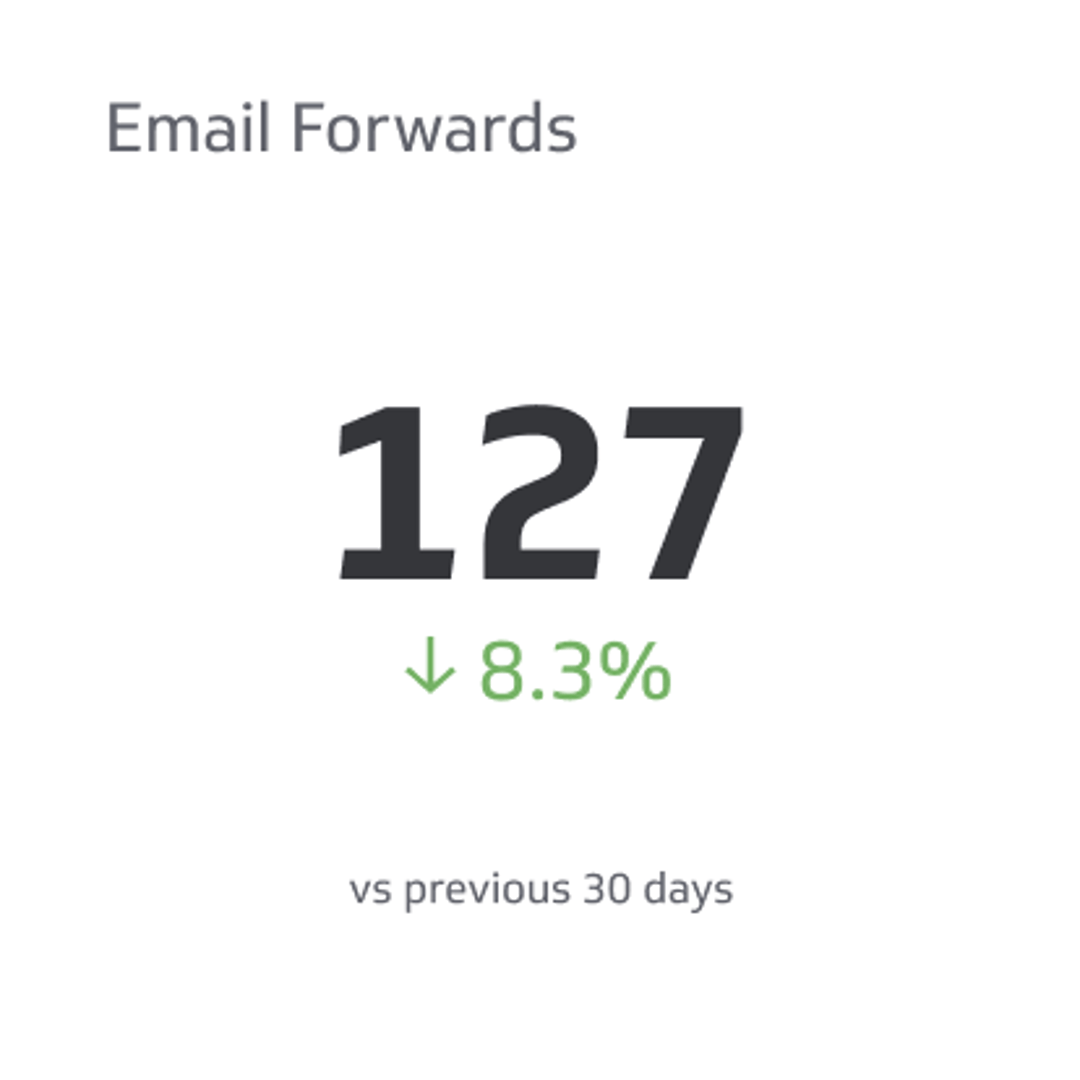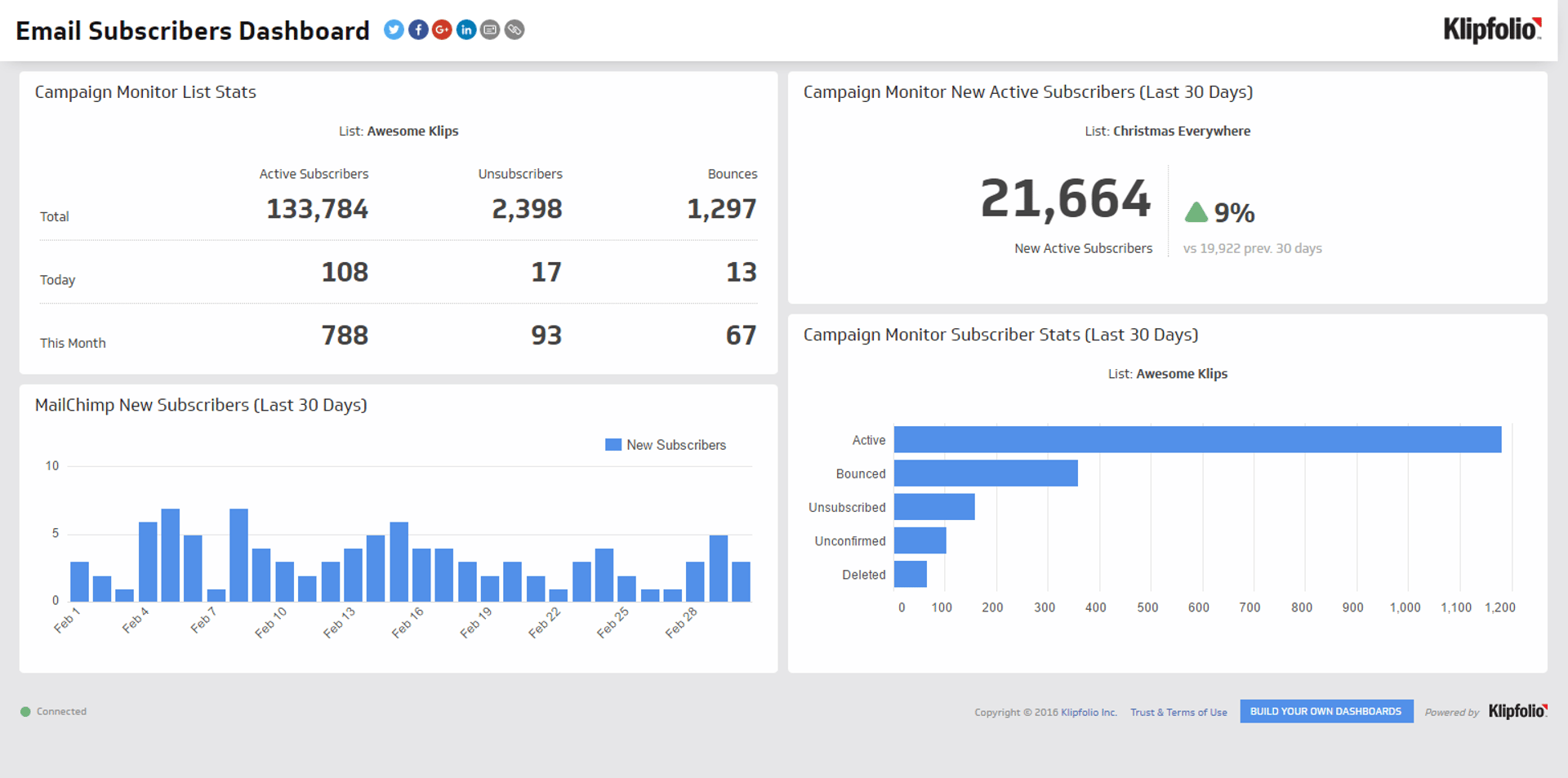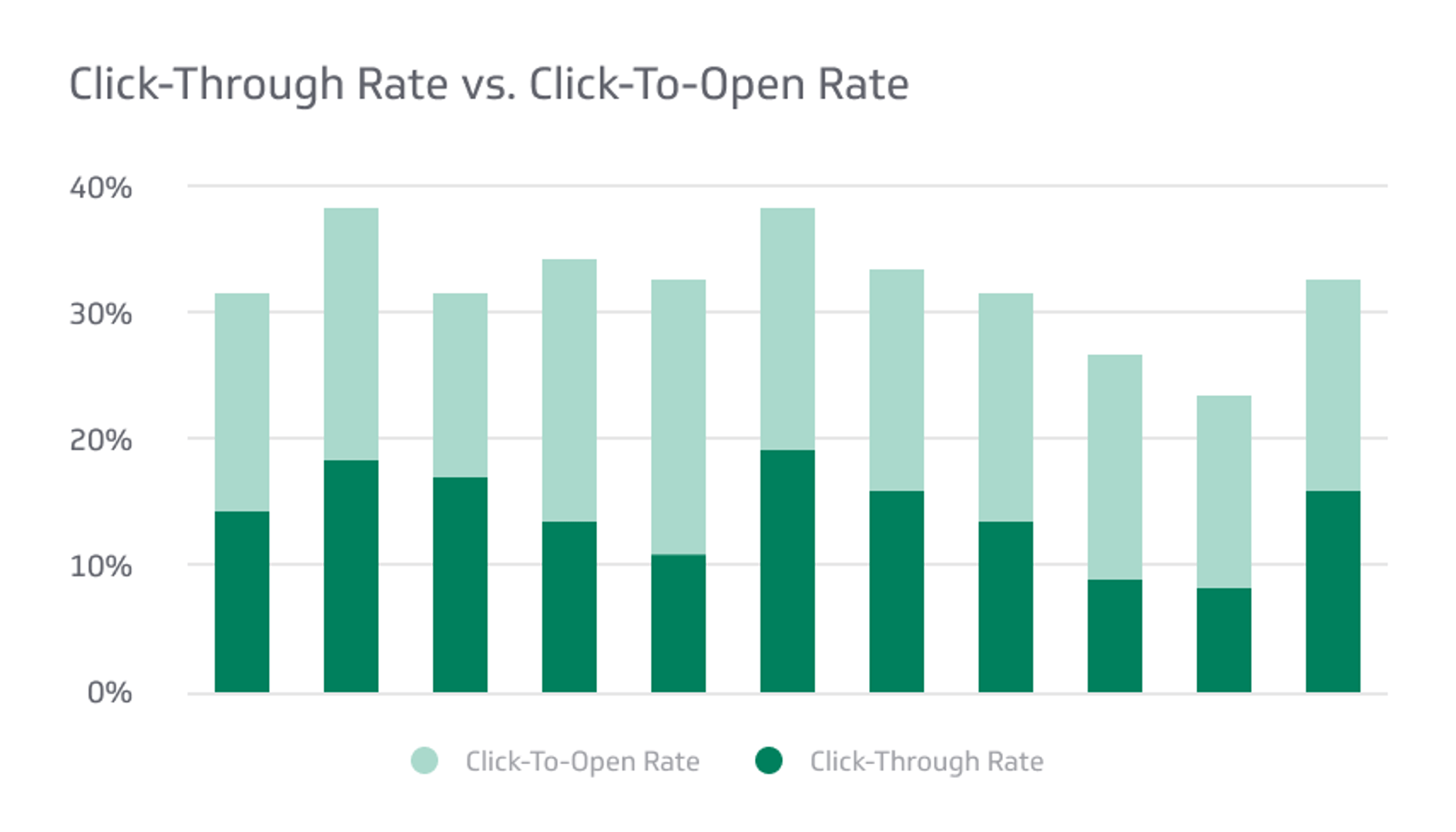Email Bounce Rate
Track all your Email Marketing KPIs in one place
Sign up for free and start making decisions for your business with confidence.

Email bounce rate is an essential metric for marketers, business operators, analysts, and SaaS teams. It's a measure of the success or failure of their email campaigns. A high email bounce rate can indicate that your emails are not reaching their intended recipients or are blocked by spam filters.
Understanding why this happens is critical to improving the effectiveness of your emails and increasing conversions. In this article, we will discuss email bounce rate and how it affects businesses so you can optimize your campaigns and maximize ROI.
What is Email Bounce Rate, and How Does it Affect Businesses
One of the critical factors determining an email campaign's success is the email bounce rate. Email bounce rate is a metric that measures the percentage of emails that are returned to the sender because they could not be delivered to the intended recipient. It's a fundamental metric that every business that relies on email marketing should know about.
Types of Email Bounces
There are two types of email bounces: hard bounce and soft bounce. Let's look at each of these in more detail.
Hard Bounces
A hard bounce happens when an email can't be delivered because the recipient's email address is invalid, non-existent, or blocked. It might also occur when the email provider blocks the sender's email address. Hard bounces can be problematic for businesses because they indicate a fundamental issue with the email list quality, which can hurt their sender reputation.
Soft Bounces
Soft bounces are temporary bounces when an email can't be delivered because the recipient's mailbox is full, the email server is down, or the message is too large. Soft bounces are less harmful than hard bounces as they don't significantly impact the sender's reputation.
How Email Bounce Rate Affects Businesses
A high email bounce rate can negatively impact businesses in terms of their communication with customers and business operations. Here are some of the ways email bounce rates can affect different types of companies:
Business Operators
Email bounce rates can affect business operators, especially those that rely on email marketing as a critical part of their customer communication strategy. A high email bounce rate can lead to reduced email deliverability rates and ineffective communication with customers. It also means that the sender's reputation is at risk, which can affect their overall email marketing strategy.
Saas Businesses
For Saas businesses that rely on emails for customer acquisition and retention, email bounce rates can be a significant challenge. High email bounce rates can lead to reduced customer acquisition rates, negatively impacting the business's profits.
Additionally, for Saas businesses, reducing email bounce rates can be tricky, as key parameters may frequently change, such as email listing policies and email server setup.
How to Measure Your Email Bounce Rate
Email bounce rate is an essential metric for any email marketing campaign. It measures the percentage of email addresses that failed to receive a message due to various reasons.
Measuring email bounce rate is crucial for marketers since it provides insights into the effectiveness of their email campaigns and the quality of their email lists. In this section, we will discuss how to measure email bounce rate in five simple steps.
Step 1: Define Bounce Rate
Before measuring email bounce rate, you must understand what it is. Email bounce rate is the percentage of emails that could not be delivered to the recipient's inbox. These emails "bounce" back to the sender for various reasons, such as an invalid email address, a full inbox, or a server issue.
Step 2: Identify a Reliable Email Service Provider (ESP)
To measure email bounce rate, you need to use an email service provider (ESP) that provides bounce tracking. A reliable ESP will provide insightful reports with detailed information about the bounced email addresses.
Step 3: Analyze Bounce Reports
Once you have identified a reliable ESP, you can access your email campaign reports. These reports contain information about the number of emails sent, the number of emails delivered, and the number of email bounces. Analyzing these reports will help you understand the effectiveness of your email campaigns and the quality of your email list.
Step 4: Calculate Bounce Rate
To calculate the email bounce rate, you need to divide the number of bounced emails by the number of emails delivered. For example, if you sent 1,000 emails and 100 emails bounced back, your bounce rate would be (100/1000)*100 = 10%.
Step 5: Improve Your Email Campaigns
Measuring email bounce rate is the first step in improving your email campaigns. Once you have identified the bounced email addresses, you can remove them from your mailing list, update your email list, and improve your email campaigns' content and design. Later, we'll look at strategies for reducing your email bounce rate.
Common Causes of High Email Bounce Rates
A high email bounce rate can significantly reduce the effectiveness of your email campaigns. To reduce your email bounce rate, you need to first understand the common causes of high email bounce rates.
1. Invalid Email Addresses - One of the most common reasons for a high email bounce rate is invalid email addresses. Invalid email addresses are those that do not exist or have been deleted. If you send an email to an invalid email address, it will bounce back, resulting in a high email bounce rate.
2. Spam Filters - Email spam filters protect users from unwanted and unsolicited emails. However, they can also be a cause of high email bounce rates. If your emails are being marked as spam, they may not even reach your recipient's inbox, resulting in a high email bounce rate.
3. Full Inboxes - If a recipient's inbox is full, any emails sent to that address will bounce back. This is known as a soft bounce and is a common cause of high email bounce rates.
4. Syntax errors - Syntax errors are mistakes in the formatting of email addresses. If you make a typo when entering an email address, it will result in a high email bounce rate. Email spam filters are designed to protect users from unwanted and unsolicited emails. However, they can also be a cause of high email bounce rates. If your emails are being marked as spam, they may not even reach your recipient's inbox, resulting in a high email bounce rate.
Strategies for Reducing Your Email Bounce Rate
Now that you understand the common causes of high email bounce rates, you can take steps to reduce them. Here are some of the most essential strategies you should keep in mind.
Verify Your Email List
One common reason businesses experience high email bounce rates is inaccurate or outdated email lists. Verifying your email list is crucial to ensure you only send emails to valid and active email addresses.
You can use email verification tools to validate your email list and identify invalid email addresses. Doing so can minimize your bounce rates and improve your email engagement rates.
Use Double Opt-In
Double opt-in is when subscribers confirm their email addresses by taking a second action, such as clicking on a confirmation link in their email. This process helps verify the validity of email addresses and reduces the chances of sending emails to fake or invalid ones. In addition, double opt-in can significantly reduce email bounce rates and improve email deliverability.
Monitor Your Email Sender Reputation
Your email sender reputation plays a crucial role in your email deliverability. Poor sender reputation can result in high bounce rates, and your emails may end up in the spam folder.
To maintain a good email sender reputation, you need to monitor your email performance metrics, such as open rates, click-through rates, and unsubscribe rates. You can use email monitoring tools to track your email metrics and identify areas that need improvement.
Segment Your Email List
Segmenting your email list is an effective way to deliver targeted and personalized emails to your subscribers. When you segment your email list, you can send relevant content to your subscribers based on their interests, behavior, or demographics. By sending targeted emails, you can improve your email engagement rates, reduce bounce rates, and increase your ROI.
Clean Your Email List Regularly
Finally, regularly cleaning your email list can help eliminate inactive or disengaged subscribers, reduce your email bounce rates, and improve your email deliverability. You can use email cleaning tools to identify subscribers who haven't opened or clicked on your emails in a long time and remove them from your list.
Best Practices for Optimizing Your Emails and Increasing Conversions
In addition to the strategies mentioned above, you can use several best practices to optimize your emails and increase conversions. Here are some of the most important ones.
Craft Compelling Subject Lines
Compelling subject lines can help optimize your emails by increasing the open rates. Your subject line should be concise, clear and convey the main message of your email. Personalization is a great way to grab your recipient's attention.
For instance, instead of a general subject line, a subject line like "{{First Name}}, here's an offer you can't refuse" will create a sense of intrigue and give the recipient a feeling of exclusivity. Always avoid using SPAM triggers or deceptive subject lines that may lead to a person marking your email as spam.
Ensure Proper Use of Images and CTAs
Images and CTAs play a huge role in optimizing your email content. Ensure that all of your images and CTAs are properly optimized for email so that they download quickly and look great on any device.
Also, ensure that your CTAs are strategically placed and provide a clear direction to your subscribers. Your call to action should be clear, concise and obvious to get desired results.
Test Your Emails and Make Adjustments
Email marketing optimization is ongoing, and testing and adjusting are always advisable. Testing will enable you to identify what works, what doesn't and why. For example, you can test different subject lines, send times, layouts, CTAs, and email frequency. Then, based on your findings, make the necessary changes and continue testing until you get the desired results.
By segmenting your email list, crafting compelling subject lines, properly using images and CTAs and testing your emails, you can optimize your emails and increase your email deliverability rate. Remember, email marketing requires constant monitoring and optimization to remain effective.
Conclusion
Email bounce rate can have a significant impact on your email deliverability. To reduce your email bounce rates, you need to monitor and optimize your emails. Start by segmenting your email list, cleaning your email list regularly, crafting compelling subject lines, and properly using images and CTAs.
Finally, keep testing and making adjustments until you get the desired results. With these strategies, you can optimize your emails and reduce email bounce rates for improved email deliverability.
Related Metrics & KPIs



